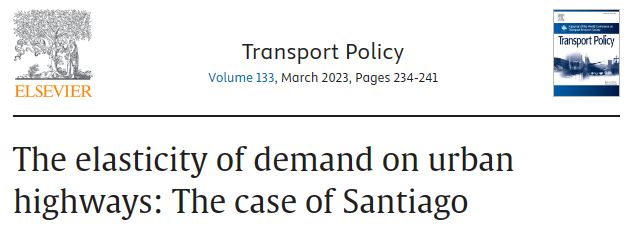Marco Batarce, Franco Basso, Leonardo J. Basso
Abstract
This study examines the relevant flow variables on urban highways in Santiago de Chile. The objective is to contribute to the knowledge of the elasticity of the flow on highways in less developed nations, bearing in mind that existing studies tend to focus on European countries and the United States. Using panel data models and five-year information from Autopista Central in Santiago, we study the elasticity of tolls, gasoline price, diesel price, and economic activity. The results indicate that economic growth is the primary variable that explains the increase in flows, which has brought a sustained rise in the country’s motorization rate. When distinguishing economic activity between mining and other sectors, it is observed that the relevant activity in Santiago is not mining. Additionally, the flow is inelastic to the toll rate in the short term, while elasticity increases in the long term. The flow is inelastic with respect to fuel prices but less so than toll tariffs.
